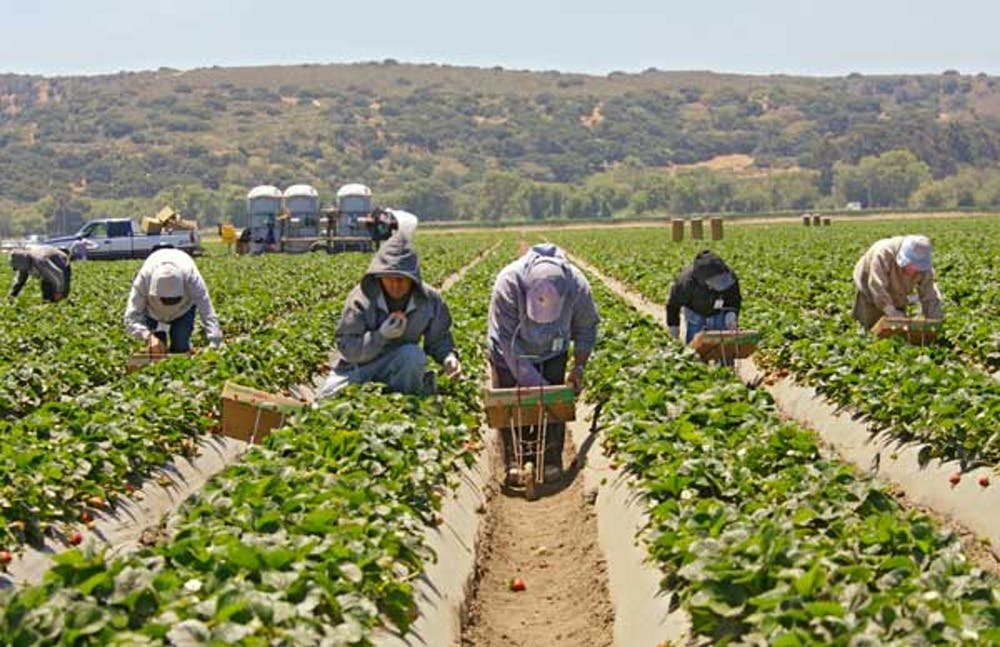California remains the world’s agricultural powerhouse — but we need not be complacent
By Victor Martino
The just-released California Agricultural Statistics Review for crop year 2017-18 shows that despite challenging issues like water, a shortage of farm labor and others, the Golden State remains the undisputed global leader in farming and agriculture.
According to the beefy annual
report from the California Department of Food & Agriculture (CDFA),
California’s farms and ranches received more than $50 billion in cash receipts
for their output. This represents an increase of almost 6 percent compared to
2016-17.
The report also highlights the diversity and abundance of California
agriculture. The state produces more than 400 crops and commodities. No other
U.S. farm state comes close to this diversity.
For example, over a third of the country’s vegetables and two-thirds of the country’s fruits and nuts are grown in California.
Additionally, California is the leading U.S. state for cash farm receipts, accounting for over 13 percent of the nation’s total agricultural value.
“California’s top 20 crop and livestock commodities accounted for $37 billion in value in 2017-18, with nine individual commodities exceeding $1 billion in value during the year. Fifteen of the top 20 commodities increased in value in 2017-18 compared to the previous year,” according to CDFA director Karen Ross.
Additionally, of the top 20 commodities, cotton, raspberries, lettuce, and walnuts experienced the largest percentage growth in cash receipts during the year, Ross says.
These are the top 10 producing crops and commodities in California for 2017-18:
Dairy Products, Milk — $6.56 billion
Grapes— $5.79 billion
Almonds— $5.60 billion
Strawberries— $3.10 billion
Cattle and Calves — $2.53 billion
Lettuce— $2.41 billion
Walnuts— $1.59 billion
Tomatoes— $1.05 billion
Pistachios— $1.01 billion
Broilers— $939 million
California also is a powerhouse ag export state.
California agricultural exports totaled $20.56 billion for 2017-18. Top commodities for export in 2017-18 included almonds, dairy and dairy products, pistachios, wine and walnuts, according to the University of California Davis Agricultural Issues Center.
On a regional level Kern County in the Central Valley remained the leading agricultural-producing county in California, with an agricultural production value of $7.25 billion, which represents a 0.9 percent increase over the previous year.
Overall California’s counties reported an increase of 5.1 percent in the value of agricultural production for 2017-18.
Six counties reported agricultural production exceeding $3 billion each.
Tulare County, also in the Central Valley, was second in value of production at $7.04 billion, which represents an increase of 10.5 percent from the year before.
Fresno County, another Central Valley county, ranked third in production value, with an increase of 13.6 percent from the prior year to $7.02 billion in 2107-18.
Monterey County remained fourth in agricultural production for the year, with a crop value of $4.43 billion.
The 2017-18 report, despite a few concerns, shows that California agriculture is not only alive and well — but it’s thriving as well.
This fact is due to the initiative and resiliency of farmers in the Golden State, who despite numerous challenges continue to innovate.
The positive results detailed in the annual agriculture review should not blind us to the serious issues and challenges farmers are facing today in California though.
Complacency in the face of success is dangerous.
In order for the Golden State to remain the nation’s and the world’s agriculture powerhouse we must deal with and solve these three major issues in 2019, in my analysis and opinion:
Water
It’s time for the new governor and the state legislature to prioritize water use in California. Water for human consumption and related uses along with for farming and food production should be the two top priorities going forward, followed by industrial use. All other uses such as ornamental (lawns, landscape) should be tertiary.
It’s time for our elected leaders to take water out of the hands of the water board and make the difficult decisions they were elected to make.
Labor
We need comprehensive immigration reform that includes facing the reality that without immigrants to pick our crops they will rot on the vine and in the fields.
President Trump and Congress need to reach a compromise, like the American Farm Bureau and other groups representing America’s farmers, agriculture and the food industry are advocating right now in Washington D.C..
Doing so this year is crucial. Time is running out.
Communication
Here in California we need to do better when it comes to telling the story of the importance of agriculture to the Golden State as a whole.
Doing so will require a concerted effort by farmers, agribusinesses, the state’s food industry and eaters.
Further, this needs to be a dialogue between agricultural interests and eaters in California.
The reality is that the majority of California residents live on the two coasts and know little about farming and food production in our state. Agriculture must engage this urban majority and involve them as part of the solution rather than as the problem.
We are all eaters and therefore we are all stakeholders in California agriculture.
“California agriculture has an inspiring story of innovation and resiliency” to tell, says CDFA secretary Ross.
“As we move forward, it’s important to share this story and remember that we’re all in this together as we work to safeguard for future generations what our forebears have provided for us — our California way of life.”
I agree, as most of you reading this do, with the state’s Secretary of Food & Agriculture. Now is the time to tell this story in new and better ways.
California remains the nation’s and the world’s agriculture powerhouse. But we shouldn’t become complacent in this fact. The state’s farmers are facing crucial issues that need to be resolved. If you eat, you need to be part of the solution.







